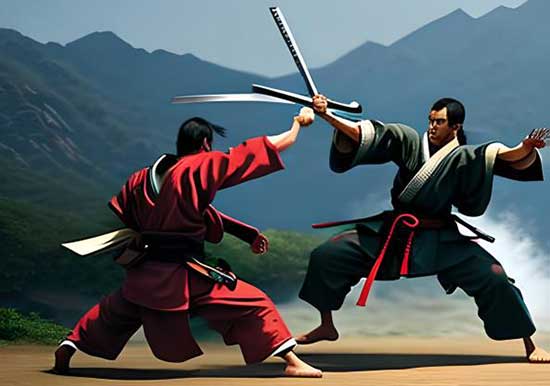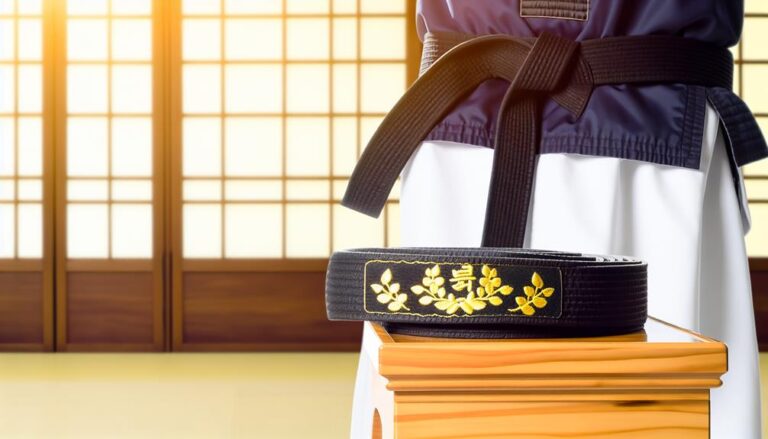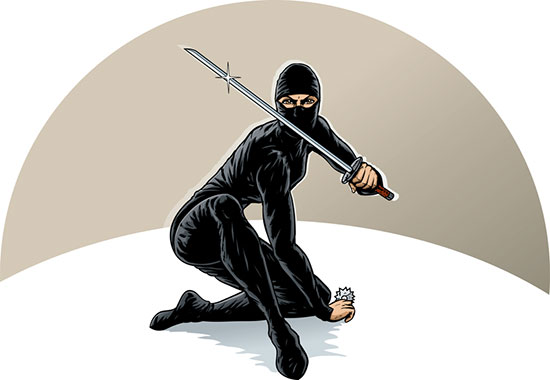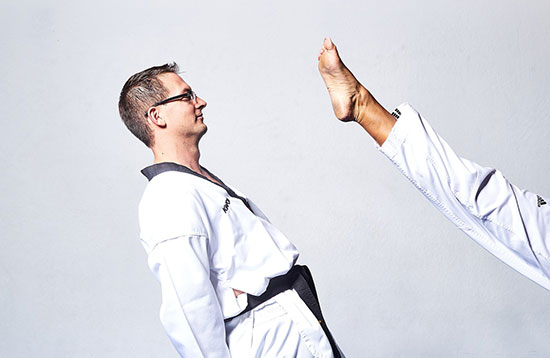Capoeira and boxing are two martial arts that offer unique approaches to combat. While capoeira incorporates elements of dance, acrobatics, and music, boxing focuses solely on punching techniques and footwork.
Both martial arts have their strengths and can be effective for self-defense, but their techniques, strategies, and training methods differ.
In this comprehensive comparison guide, we will explore the fundamentals of capoeira and boxing, analyze their techniques and strategies, consider their applications in self-defense scenarios, discuss their fitness benefits, and highlight the opportunities for cross-training between the two disciplines.
Key Takeaways:
- Capoeira combines elements of dance, acrobatics, and music, while boxing focuses on punching techniques and footwork.
- Capoeira offers unique evasion techniques and fluid movements, while boxing emphasizes precise punches and defensive strategies.
- Both martial arts can be used for self-defense, with capoeira providing mobility and creativity, and boxing offering direct striking power.
- Capoeira and boxing provide physical fitness benefits, improving agility, coordination, and cardiovascular endurance.
- Cross-training in both capoeira and boxing can enhance overall martial arts skills and offer a well-rounded approach to combat.
Contents
The Fundamentals of Capoeira
Capoeira is a unique martial art that originated in Brazil as a means of self-defense for African slaves. It combines elements of dance, acrobatics, and music, making it a truly expressive and dynamic art form. Capoeira training focuses on developing agility, flexibility, and coordination, as well as enhancing body awareness and self-expression.
Capoeira techniques include a wide range of kicks, punches, and dodging movements. Practitioners learn to execute these techniques with fluidity and precision, incorporating elements of acrobatics and dance.
The constant movement and acrobatic elements make capoeira practitioners difficult to target, while the rhythmic nature of the art adds a unique flair to their combat style.
Capoeira training offers numerous physical and mental benefits. It improves fitness levels by providing a full-body workout that enhances cardiovascular endurance, strength, and flexibility.
The acrobatic movements also contribute to improved agility and coordination. Additionally, capoeira promotes self-expression and body awareness, fostering a deeper connection between the practitioner and their movements.
Table: Capoeira Techniques
| Techniques | Description |
|---|---|
| Kicks | A variety of kicks, including high kicks, spinning kicks, and low kicks. |
| Punches | Flips, cartwheels, and other acrobatic movements are used to add flair and unpredictability to combat. |
| Dodging | Swift movements to evade incoming attacks and create opportunities for counterattacks. |
| Acrobatics | Flips, cartwheels, and other acrobatic movements used to add flair and unpredictability to combat. |
The Fundamentals of Boxing
Boxing is a martial art that focuses solely on punching techniques. It is a popular combat sport and a form of self-defense.
Boxers learn a variety of punches, including jabs, hooks, and uppercuts. Footwork is an essential aspect of boxing, enabling boxers to control distance and positioning.
Defensive techniques, such as bobbing and weaving, parrying, and blocking, are also taught. Boxing training involves heavy bag work, pad work, and sparring to develop striking skills, footwork, and defensive strategies. It offers physical benefits such as cardiovascular fitness, strength, and coordination.
In boxing, the main objective is to deliver effective punches while avoiding incoming strikes. Boxers focus on developing accuracy, speed, and power in their punches. They learn to utilize different punching techniques based on their desired target and the situation.
Footwork is crucial in boxing as it allows boxers to maintain proper positioning for offense and defense. By moving in and out, side to side, and pivoting, boxers can control the distance between themselves and their opponents, creating opportunities for effective strikes while minimizing the risk of getting hit.
Defensive strategies in boxing are designed to protect the boxer and counter the opponent’s attacks. Techniques such as bobbing and weaving involve moving the head to evade punches while parrying and blocking are used to deflect or absorb incoming strikes.
Mastery of defensive techniques allows boxers to create openings for their punches and minimize the impact of their opponent’s attacks. Overall, boxing provides a comprehensive training experience that develops physical fitness, mental focus, and self-defense skills.
Capoeira vs Boxing: A Comparison of Techniques and Strategies
Capoeira and boxing are two martial arts with distinct techniques and strategies. Each style offers unique approaches to combat, catering to different preferences and goals.
Let’s take a closer look at the techniques and strategies employed in both capoeira and boxing to understand the contrasts between these two martial arts.
Capoeira Techniques and Strategies
Capoeira combines fluid and acrobatic movements with a wide array of kicks, dodges, and unpredictable attacks. The emphasis is on mobility, rhythm, and evasion.
Capoeiristas use their agility and unpredictability to confuse opponents and create openings for counterattacks. The constant movement and acrobatic elements make capoeira practitioners difficult to target, providing them with a unique advantage in combat.
Boxing Techniques and Strategies
In contrast, boxing focuses primarily on punching techniques, footwork, and defensive strategies. Boxers learn precise punches such as jabs, hooks, and uppercuts, utilizing footwork to control distance and positioning.
Defensive tactics like bobbing and weaving, parrying, and blocking are also essential skills. Boxing is more structured and tactical, with boxers aiming to create openings for strikes while simultaneously avoiding incoming punches.
While capoeira offers a dynamic and acrobatic fighting style, boxing relies on powerful and strategic punching techniques combined with effective footwork and defensive maneuvers.
| Capoeira | Boxing | |
|---|---|---|
| Techniques | Fluid, acrobatic movements, kicks, dodges | Punches (jabs, hooks, uppercuts) |
| Strategies | Mobility, evasion, unpredictability | Precision, power, defensive tactics |
| Focus | Complex movement and creativity | Punching techniques and footwork |
As evident from the comparison table, capoeira and boxing differ significantly in their techniques and strategies.
Capoeira places a strong emphasis on dynamic movement, acrobatics, and creativity, while boxing focuses more on precise punching techniques, footwork, and defensive maneuvers.
It’s important to note that both martial arts have their strengths and can be effective in their ways.
Capoeira’s fluidity and acrobatics can disorient attackers, while boxing’s powerful punches and defensive tactics can quickly incapacitate opponents. The choice between capoeira and boxing ultimately depends on personal preference, goals, and the desired style of combat.
Capoeira vs Boxing: Self-Defense Considerations
When it comes to self-defense, both capoeira and boxing offer unique approaches. Capoeira, with its emphasis on mobility, evasion, and fluid movements, can disorient and confuse attackers. The constant movement and acrobatic elements make capoeiristas difficult to target.
The unpredictable attacks and dodging techniques can help capoeiristas escape dangerous situations. However, it’s important to note that Capoeira may not provide specific self-defense techniques for immediate, targeted strikes.
Boxing, on the other hand, offers direct and powerful striking techniques that can quickly incapacitate an attacker. The focus on footwork, defensive strategies, and precise punches makes boxing effective for self-defense. Boxers learn various types of punches, defensive techniques, and footwork that enable them to control distance and positioning. The structured and tactical nature of boxing allows practitioners to create openings for strikes while avoiding incoming punches.
Both capoeira and boxing have their advantages in self-defense scenarios, and it ultimately depends on individual preferences and goals.
Capoeira offers unique evasion techniques and creativity in combat, while boxing provides powerful strikes and a structured approach to self-defense. It’s essential to consider personal attributes, such as mobility, agility, and personal comfort when choosing a martial art for self-defense.
Capoeira for Self-Defense
Capoeira’s emphasis on mobility, dodging, and fluid movements can be effective for self-defense in certain situations. The constant movement and acrobatic elements make capoeiristas difficult to target, disorienting attackers.
Capoeiristas learn a variety of kicks, punches, and dodging techniques that can help them defend themselves in real-world scenarios. However, capoeira may not provide specific self-defense techniques for immediate, targeted strikes.
Boxing for Self-Defense
Boxing is a striking-focused martial art that offers direct and powerful techniques for self-defense. Boxers learn a variety of punches, footwork, and defensive strategies that enable them to incapacitate attackers quickly.
The focus on precise punches, defensive techniques, and footwork allows boxers to control distance and positioning in a self-defense situation. Boxing is a structured and tactical martial art that provides effective tools for self-protection.
| Capoeira for Self-Defense | Boxing for Self-Defense |
|---|---|
| Emphasizes mobility, evasion, and fluid movements | Focused on powerful punches, footwork, and defensive strategies |
| Disorients and confuses attackers with unpredictable movement | Enables quick incapacitation of attackers with precise punches |
| Does not provide specific self-defense techniques for targeted strikes | Offers a structured approach with techniques for immediate self-defense |
Capoeira, Boxing, and Fitness
Both capoeira and boxing offer a wide range of physical fitness benefits. Capoeira training involves constant movement, acrobatics, and rhythm, making it an excellent full-body workout that improves agility, flexibility, and coordination.
Combining kicks, dodging techniques, and fluid movements challenges the body and enhances cardiovascular endurance. Capoeira also offers mental benefits, such as improved body awareness and self-expression.
Boxing training, on the other hand, focuses on developing cardiovascular fitness, strength, and coordination. The intense punching drills, footwork exercises, and defensive strategies in boxing provide a high-intensity cardio workout and help build upper-body strength.
The repetitive nature of boxing training also improves muscular endurance, making it an effective way to get fit and stay in shape.
To compare the fitness benefits of capoeira and boxing, let’s take a look at this table:
| Capoeira | Boxing |
|---|---|
| Improves agility, flexibility, and coordination | Develops cardiovascular fitness and muscular endurance |
| Enhances body awareness and self-expression | Builds upper-body strength |
| Offers a full-body workout | Provides a high-intensity cardio workout |
As you can see, both capoeira and boxing offer unique ways to stay fit and healthy. Capoeira’s emphasis on movement, acrobatics, and rhythm provides a dynamic and engaging workout that improves overall agility and coordination.
On the other hand, boxing’s focus on punching techniques, footwork, and defensive strategies offers a high-intensity cardio workout and helps build upper-body strength.
Whether you choose to train in capoeira or boxing, both martial arts provide physical and mental benefits that can help you achieve your fitness goals.
The key is to find the one that resonates with you and fits your preferences and interests. So, put on your workout gear and get ready to kick, punch, and move your way to a fitter and healthier you!
Capoeira vs Boxing: The Cross-Training Opportunity
Combining the techniques and strategies of capoeira and boxing through cross-training can provide martial artists with a unique and well-rounded skill set. By blending the mobility, evasion, and expressive movements of capoeira with the striking techniques, footwork, and defensive strategies of boxing, practitioners can enhance their overall abilities in combat.
Benefits of Cross-Training
Engaging in cross-training between capoeira and boxing offers numerous advantages. Firstly, it allows practitioners to improve their footwork, agility, and coordination by incorporating the fluidity and unpredictability of capoeira into their boxing skills. This combination adds an element of creativity and adaptability to their movements, enabling them to effectively navigate various combat scenarios.
Additionally, cross-training enhances versatility in combat by offering a chance to explore and combine the unique attributes of both martial arts. By integrating the rhythmic movements and evasion techniques of capoeira with the precise striking techniques and defensive strategies of boxing, practitioners can develop a deeper understanding of effective movement and timing.
The Complete Picture
While capoeira and boxing have their strengths and techniques, cross-training presents an opportunity to develop a well-rounded approach to combat. By combining the best elements of both martial arts, practitioners can maximize their martial arts skills and adaptability. Whether used for self-defense, fitness, or personal growth, the cross-training approach provides a comprehensive and dynamic foundation for martial artists.
Overall, the cross-training opportunity between capoeira and boxing offers a unique blend of fluidity, agility, precision, and adaptability. By integrating the aspects of both martial arts, practitioners can enhance their overall martial arts abilities and become more well-rounded fighters. Whether you choose to focus primarily on capoeira, boxing, or both, the cross-training approach provides a pathway to explore different aspects of martial arts and reach new levels of skill and understanding.
| Capoeira | Boxing |
|---|---|
| Fluid and acrobatic movements | Precise and powerful punching techniques |
| Emphasizes mobility, evasion, and rhythm | Focuses on footwork, defensive strategies, and precision |
| Provides unique evasion techniques and creativity in combat | Offers direct and powerful striking techniques |
Conclusion
Capoeira and boxing are two distinct martial arts that offer unique approaches to combat. Capoeira combines elements of dance, acrobatics, and music, emphasizing mobility, unpredictability, and rhythm. It can be effective for self-defense, offering evasion techniques and creativity in combat. However, it may not provide specific self-defense techniques for targeted strikes.
Boxing, on the other hand, is a striking-focused martial art that emphasizes punches, footwork, and defensive strategies. It is effective for self-defense and provides a great cardiovascular workout. With its focus on powerful and precise punching techniques, defensive strategies, and footwork, boxing equips individuals with the skills necessary to protect themselves in dangerous situations.
Whether you choose capoeira or boxing, both martial arts offer physical and mental benefits. Capoeira training emphasizes agility, flexibility, and coordination, while boxing training focuses on cardiovascular fitness, strength, and coordination. Cross-training in both capoeira and boxing can enhance overall martial arts skills and offer a well-rounded approach to combat. By combining the unique attributes of each style, individuals can develop a deeper understanding of movement, improve their fitness, and become more versatile in combat situations.





